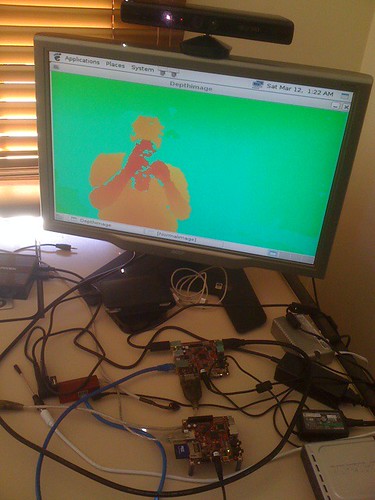I have been typing GEOS-3586 a lot of times this past week. The DDS/BIL plugin written for Geoserver 2.0.x had fallen by the wayside as things had changed on the WMS MapProducer(Response) front. This time it is going to be a serious push to get the plugin promoted from community module to extension status. I still need to get my head around GSIP-27 and GSIP-22 to efficiently continue maintaining this module.
Finally I was recommended to just keep trunk updated and work towards getting the module moved out of community into extensions space. The DDS/BIL module has indeed a special place since it is the only community module extending map respones, all other map reponses are part of core. The extensions in response are mostly in the WFS area (OGR, Excel etc.).
WorldWind in typical fashion throws some curve-balls at Geoserver: it uses BGCOLOR=-9999.0 for the elevation models instead of a hexcode. Fixing this will require dangerous interventions on the Geoserver side as outlined here by Andrea:
The plugin has some primitive documentation now as well - hacked together with my basic look-and-learn Sphinx-fu.
Talking about putting things together - I finally migrated the content from my old blog into this one. Now just need a way to redirect all the posts to duplicates here and just keep the blog being deleted one.
Finally I was recommended to just keep trunk updated and work towards getting the module moved out of community into extensions space. The DDS/BIL module has indeed a special place since it is the only community module extending map respones, all other map reponses are part of core. The extensions in response are mostly in the WFS area (OGR, Excel etc.).
WorldWind in typical fashion throws some curve-balls at Geoserver: it uses BGCOLOR=-9999.0 for the elevation models instead of a hexcode. Fixing this will require dangerous interventions on the Geoserver side as outlined here by Andrea:
The kvp parsers are at work way before the output formatsI am also planning to include WorldWind (in an applet form) as a 3D layer preview tool in Geoserver alongside Openlayers. Chris Holmes floated this idea a while back. Since I will be doing lots of work on WorldWind anyway, I can practice browser integration on the side in Geoserver.
get even into the picture.
The class that parses bgcolor is ColorKvpParser.
I think you can write a DispatcherCallback that hijacks the parsing and error
reporting mechanism, but you have to be very careful to do so to avoid
breaking the proper error reporting mechanism in other cases.
In the init(Response) method of the DispatcherCallback you check the error,
reset it to null if it's the one coming from the bgcolor parse failing,
it is that special value, and the output format is one of the two that worldwind
is using (use the raw kvp map to check the format and bgcolor values).
Then you register that dispatcher callback as a spring bean in
applicationContext.xml
and GeoServer should automatically pick it and use it
Please be very specific in the checks above or you'll leave users making
wrong request in a world of pain (no error reporting and software blowing up
in the most unexpected ways, or just ignoring what they set).
The plugin has some primitive documentation now as well - hacked together with my basic look-and-learn Sphinx-fu.
Talking about putting things together - I finally migrated the content from my old blog into this one. Now just need a way to redirect all the posts to duplicates here and just keep the blog being deleted one.

